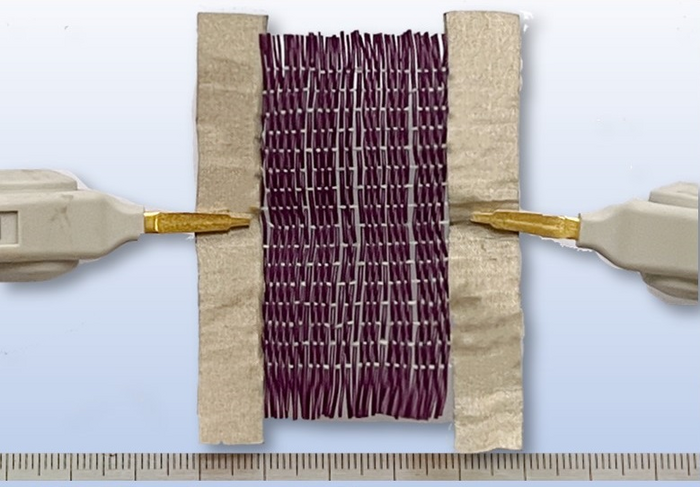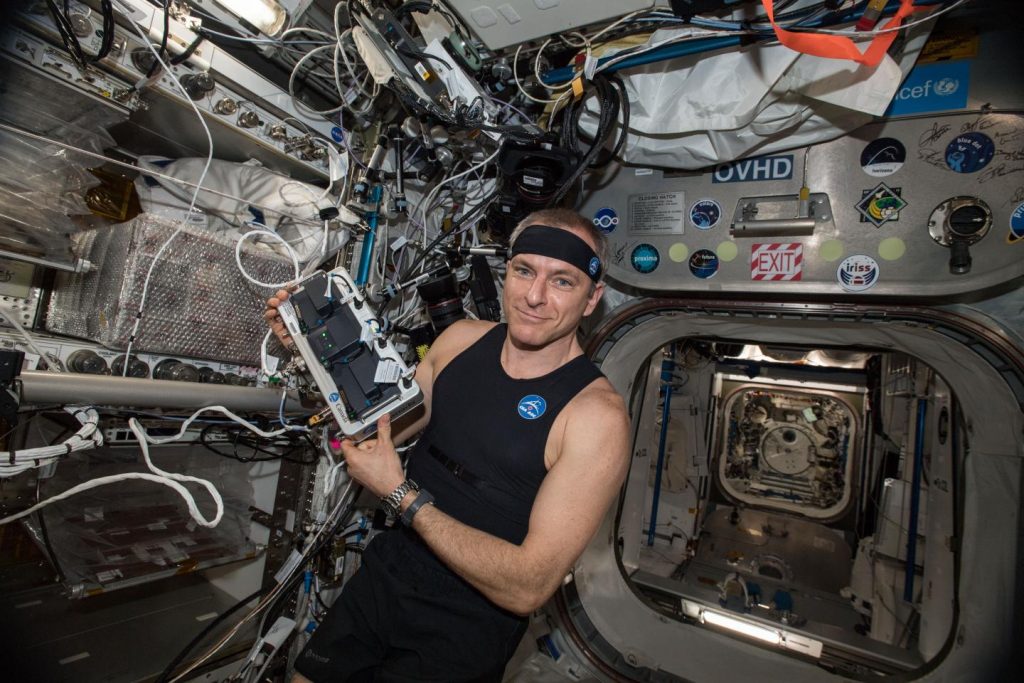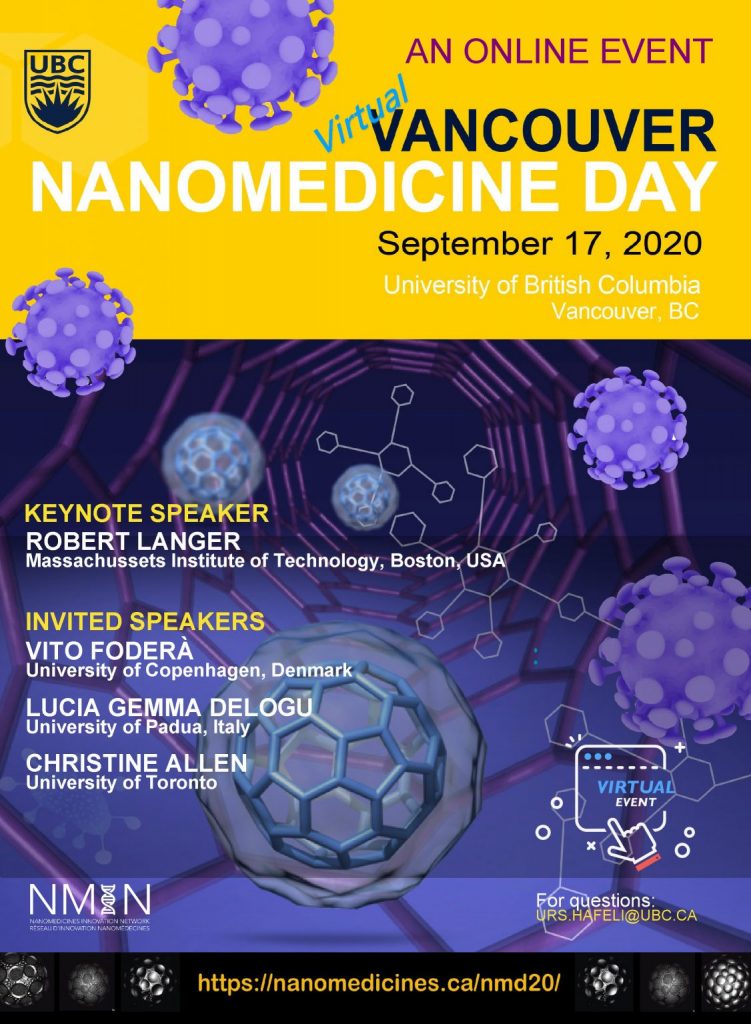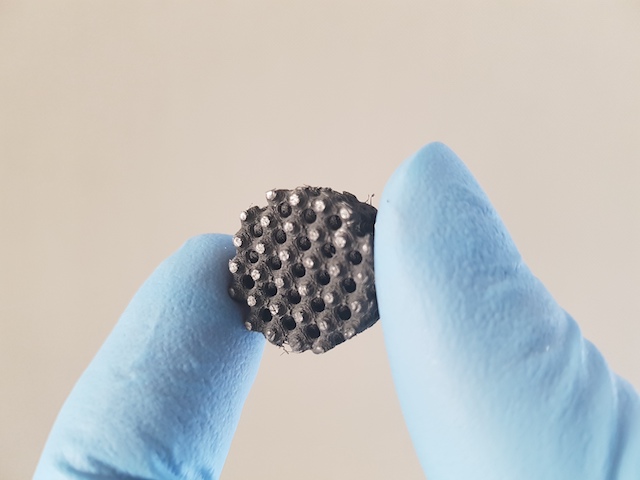I received (via email) a July 21, 2022 news release about the launch of a quantum science initiative in Vancouver (BTW, I have more about the Canadian quantum scene later in this post),
World’s top physicists unite to tackle one of Science’s greatest
mysteries
Vancouver-based Quantum Gravity Society leads international quest to
discover Theory of Quantum Gravity
Vancouver, B.C. (July 21, 2022): More than two dozen of the world’s
top physicists, including three Nobel Prize winners, will gather in
Vancouver this August for a Quantum Gravity Conference that will host
the launch a Vancouver-based Quantum Gravity Institute (QGI) and a
new global research collaboration that could significantly advance our
understanding of physics and gravity and profoundly change the world as
we know it.
For roughly 100 years, the world’s understanding of physics has been
based on Albert Einstein’s General Theory of Relativity (GR), which
explored the theory of space, time and gravity, and quantum mechanics
(QM), which focuses on the behaviour of matter and light on the atomic
and subatomic scale. GR has given us a deep understanding of the cosmos,
leading to space travel and technology like atomic clocks, which govern
global GPS systems. QM is responsible for most of the equipment that
runs our world today, including the electronics, lasers, computers, cell
phones, plastics, and other technologies that support modern
transportation, communications, medicine, agriculture, energy systems
and more.
While each theory has led to countless scientific breakthroughs, in many
cases, they are incompatible and seemingly contradictory. Discovering a
unifying connection between these two fundamental theories, the elusive
Theory of Quantum Gravity, could provide the world with a deeper
understanding of time, gravity and matter and how to potentially control
them. It could also lead to new technologies that would affect most
aspects of daily life, including how we communicate, grow food, deliver
health care, transport people and goods, and produce energy.
“Discovering the Theory of Quantum Gravity could lead to the
possibility of time travel, new quantum devices, or even massive new
energy resources that produce clean energy and help us address climate
change,” said Philip Stamp, Professor, Department of Physics and
Astronomy, University of British Columbia, and Visiting Associate in
Theoretical Astrophysics at Caltech [California Institute of Technology]. “The potential long-term ramifications of this discovery are so incredible that life on earth 100
years from now could look as miraculous to us now as today’s
technology would have seemed to people living 100 years ago.”
The new Quantum Gravity Institute and the conference were founded by the
Quantum Gravity Society, which was created in 2022 by a group of
Canadian technology, business and community leaders, and leading
physicists. Among its goals are to advance the science of physics and
facilitate research on the Theory of Quantum Gravity through initiatives
such as the conference and assembling the world’s leading archive of
scientific papers and lectures associated with the attempts to reconcile
these two theories over the past century.
Attending the Quantum Gravity Conference in Vancouver (August 15-19 [2022])
will be two dozen of the world’s top physicists, including Nobel
Laureates Kip Thorne, Jim Peebles and Sir Roger Penrose, as well as
physicists Baron Martin Rees, Markus Aspelmeyer, Viatcheslav Mukhanov
and Paul Steinhardt. On Wednesday, August 17, the conference will be
open to the public, providing them with a once-in-a-lifetime opportunity
to attend keynote addresses from the world’s pre-eminent physicists.
… A noon-hour discussion on the importance of the
research will be delivered by Kip Thorne, the former Feynman Professor
of physics at Caltech. Thorne is well known for his popular books, and
for developing the original idea for the 2014 film “Interstellar.” He
was also crucial to the development of the book “Contact” by Carl Sagan,
which was also made into a motion picture.
“We look forward to welcoming many of the world’s brightest minds to
Vancouver for our first Quantum Gravity Conference,” said Frank
Giustra, CEO Fiore Group and Co-Founder, Quantum Gravity Society. “One
of the goals of our Society will be to establish Vancouver as a
supportive home base for research and facilitate the scientific
collaboration that will be required to unlock this mystery that has
eluded some of the world’s most brilliant physicists for so long.”
“The format is key,” explains Terry Hui, UC Berkley Physics alumnus
and Co-Founder, Quantum Gravity Society [and CEO of Concord Pacific].
“Like the Solvay Conference nearly 100 years ago, the Quantum Gravity
Conference will bring top scientists together in salon-style gatherings. The
relaxed evening format following the conference will reduce barriers and
allow these great minds to freely exchange ideas. I hope this will help accelerate
the solution of this hundred-year bottleneck between theories relatively
soon.”
“As amazing as our journey of scientific discovery has been over the
past century, we still have so much to learn about how the universe
works on a macro, atomic and subatomic level,” added Paul Lee,
Managing Partner, Vanedge Capital, and Co-Founder, Quantum Gravity
Society. “New experiments and observations capable of advancing work
on this scientific challenge are becoming increasingly possible in
today’s physics labs and using new astronomical tools. The Quantum
Gravity Society looks forward to leveraging that growing technical
capacity with joint theory and experimental work that harnesses the
collective expertise of the world’s great physicists.”
About Quantum Gravity Society
Quantum Gravity Society was founded in Vancouver, Canada in 2020 by a
group of Canadian business, technology and community leaders, and
leading international physicists. The Society’s founding members
include Frank Giustra (Fiore Group), Terry Hui (Concord Pacific), Paul
Lee and Moe Kermani (Vanedge Capital) and Markus Frind (Frind Estate
Winery), along with renowned physicists Abhay Ashtekar, Sir Roger
Penrose, Philip Stamp, Bill Unruh and Birgitta Whaley. For more
information, visit Quantum Gravity Society.
About the Quantum Gravity Conference (Vancouver 2022)
The inaugural Quantum Gravity Conference (August 15-19 [2022]) is presented by
Quantum Gravity Society, Fiore Group, Vanedge Capital, Concord Pacific,
The Westin Bayshore, Vancouver and Frind Estate Winery. For conference
information, visit conference.quantumgravityinstitute.ca. To
register to attend the conference, visit Eventbrite.com.
The front page on the Quantum Gravity Society website is identical to the front page for the Quantum Mechanics & Gravity: Marrying Theory & Experiment conference website. It’s probable that will change with time.
This seems to be an in-person event only.
The site for the conference is in an exceptionally pretty location in Coal Harbour and it’s close to Stanley Park (a major tourist attraction),
The Westin Bayshore, Vancouver
1601 Bayshore Drive
Vancouver, BC V6G 2V4
View map
Assuming that most of my readers will be interested in the ‘public’ day, here’s more from the Wednesday, August 17, 2022 registration page on Eventbrite,
Tickets:
- Corporate Table of 8 all day access – includes VIP Luncheon: $1,100
- Ticket per person all day access – includes VIP Luncheon: $129
- Ticket per person all day access (no VIP luncheon): $59
- Student / Academia Ticket – all day access (no VIP luncheon): $30
Date:
Wednesday, August 17, 2022 @ 9:00 a.m. – 5:15 p.m. (PT)
Schedule:
- Registration Opens: 8:00 a.m.
- Morning Program: 9:00 a.m. – 12:30 p.m.
- VIP Lunch: 12:30 p.m. – 2:30 p.m.
- Afternoon Program: 2:30 p.m. – 4:20 p.m.
- Public Discussion / Debate: 4:20 p.m. – 5:15 p.m.
Program:
9:00 a.m. Session 1: Beginning of the Universe
- Viatcheslav Mukhanov – Theoretical Physicist and Cosmologist, University of Munich
- Paul Steinhardt – Theoretical Physicist, Princeton University
Session 2: History of the Universe
- Jim Peebles, 2019 Nobel Laureate, Princeton University
- Baron Martin Rees – Cosmologist and Astrophysicist, University of Cambridge
- Sir Roger Penrose, 2020 Nobel Laureate, University of Oxford (via zoom)
12:30 p.m. VIP Lunch Session: Quantum Gravity — Why Should We Care?
- Kip Thorne – 2017 Nobel Laureate, Executive Producer of blockbuster film “Interstellar”
2:30 p.m. Session 3: What do Experiments Say?
- Markus Aspelmeyer – Experimental Physicist, Quantum Optics and Optomechanics Leader, University of Vienna
- Sir Roger Penrose – 2020 Nobel Laureate (via zoom)
Session 4: Time Travel
- Kip Thorne – 2017 Nobel Laureate, Executive Producer of blockbuster film “Interstellar”
Event Partners
- Quantum Gravity Society
- Westin Bayshore
- Fiore Group
- Concord Pacific
- VanEdge Capital
- Frind Estate Winery
Marketing Partners
- BC Business Council
- Greater Vancouver Board of Trade
Please note that Sir Roger Penrose will be present via Zoom but all the others will be there in the room with you.
Given that Kip Thorne won his 2017 Nobel Prize in Physics (with Rainer Weiss and Barry Barish) for work on gravitational waves, it’s surprising there’s no mention of this in the publicity for a conference on quantum gravity. Finding gravitational waves in 2016 was a very big deal (see Josh Fischman’s and Steve Mirsky’s February 11, 2016 interview with Kip Thorne for Scientific American).
Some thoughts on this conference and the Canadian quantum scene
This conference has a fascinating collection of players. Even I recognized some of the names, e.g., Penrose, Rees, Thorne.
The academics were to be expected and every presenter is an academic, often with their own Wikipedia page. Weirdly, there’s no one from the Perimeter Institute Institute for Theoretical Physics or TRIUMF (a national physics laboratory and centre for particle acceleration) or from anywhere else in Canada, which may be due to their academic specialty rather than an attempt to freeze out Canadian physicists. In any event, the conference academics are largely from the US (a lot of them from CalTech and Stanford) and from the UK.
The business people are a bit of a surprise. The BC Business Council and the Greater Vancouver Board of Trade? Frank Giustra who first made his money with gold mines, then with Lionsgate Entertainment, and who continues to make a great deal of money with his equity investment company, Fiore Group? Terry Hui, Chief Executive Office of Concord Pacific, a real estate development company? VanEdge Capital, an early stage venture capital fund? A winery? Missing from this list is D-Wave Systems, Canada’s quantum calling card and local company. While their area of expertise is quantum computing, I’d still expect to see them present as sponsors. *ETA December 6, 2022: I just looked at the conference page again and D-Wave is now listed as a sponsor.*
The academics? These people are not cheap dates (flights, speaker’s fees, a room at the Bayshore, meals). This is a very expensive conference and $129 for lunch and a daypass is likely a heavily subsidized ticket.
Another surprise? No government money/sponsorship. I don’t recall seeing another academic conference held in Canada without any government participation.
Canadian quantum scene
A National Quantum Strategy was first announced in the 2021 Canadian federal budget and reannounced in the 2022 federal budget (see my April 19, 2022 posting for a few more budget details).. Or, you may find this National Quantum Strategy Consultations: What We Heard Report more informative. There’s also a webpage for general information about the National Quantum Strategy.
As evidence of action, the Natural Science and Engineering Research Council of Canada (NSERC) announced new grant programmes made possible by the National Quantum Strategy in a March 15, 2022 news release,
Quantum science and innovation are giving rise to promising advances in communications, computing, materials, sensing, health care, navigation and other key areas. The Government of Canada is committed to helping shape the future of quantum technology by supporting Canada’s quantum sector and establishing leadership in this emerging and transformative domain.
Today [March 15, 2022], the Honourable François-Philippe Champagne, Minister of Innovation, Science and Industry, is announcing an investment of $137.9 million through the Natural Sciences and Engineering Research Council of Canada’s (NSERC) Collaborative Research and Training Experience (CREATE) grants and Alliance grants. These grants are an important next step in advancing the National Quantum Strategy and will reinforce Canada’s research strengths in quantum science while also helping to develop a talent pipeline to support the growth of a strong quantum community.
…
Quick facts
Budget 2021 committed $360 million to build the foundation for a National Quantum Strategy, enabling the Government of Canada to build on previous investments in the sector to advance the emerging field of quantum technologies. The quantum sector is key to fuelling Canada’s economy, long-term resilience and growth, especially as technologies mature and more sectors harness quantum capabilities.
Development of quantum technologies offers job opportunities in research and science, software and hardware engineering and development, manufacturing, technical support, sales and marketing, business operations and other fields.
The Government of Canada also invested more than $1 billion in quantum research and science from 2009 to 2020—mainly through competitive granting agency programs, including Natural Sciences and Engineering Research Council of Canada programs and the Canada First Research Excellence Fund—to help establish Canada as a global leader in quantum science.
In addition, the government has invested in bringing new quantum technologies to market, including investments through Canada’s regional development agencies, the Strategic Innovation Fund and the National Research Council of Canada’s Industrial Research Assistance Program.
Bank of Canada, cryptocurrency, and quantum computing
My July 25, 2022 posting features a special project, Note: All emphases are mine,
… (from an April 14, 2022 HKA Marketing Communications news release on EurekAlert),
Multiverse Computing, a global leader in quantum computing solutions for the financial industry and beyond with offices in Toronto and Spain, today announced it has completed a proof-of-concept project with the Bank of Canada through which the parties used quantum computing to simulate the adoption of cryptocurrency as a method of payment by non-financial firms.
“We are proud to be a trusted partner of the first G7 central bank to explore modelling of complex networks and cryptocurrencies through the use of quantum computing,” said Sam Mugel, CTO [Chief Technical Officer] at Multiverse Computing. “The results of the simulation are very intriguing and insightful as stakeholders consider further research in the domain. Thanks to the algorithm we developed together with our partners at the Bank of Canada, we have been able to model a complex system reliably and accurately given the current state of quantum computing capabilities.”
…
Multiverse Computing conducted its innovative work related to applying quantum computing for modelling complex economic interactions in a research project with the Bank of Canada. The project explored quantum computing technology as a way to simulate complex economic behaviour that is otherwise very difficult to simulate using traditional computational techniques.
By implementing this solution using D-Wave’s annealing quantum computer, the simulation was able to tackle financial networks as large as 8-10 players, with up to 2^90 possible network configurations. Note that classical computing approaches cannot solve large networks of practical relevance as a 15-player network requires as many resources as there are atoms in the universe.
…
Quantum Technologies and the Council of Canadian Academies (CCA)
In a May 26, 2022 blog posting the CCA announced its Expert Panel on Quantum Technologies (they will be issuing a Quantum Technologies report),
The emergence of quantum technologies will impact all sectors of the Canadian economy, presenting significant opportunities but also risks. At the request of the National Research Council of Canada (NRC) and Innovation, Science and Economic Development Canada (ISED), the Council of Canadian Academies (CCA) has formed an Expert Panel to examine the impacts, opportunities, and challenges quantum technologies present for Canadian industry, governments, and Canadians. Raymond Laflamme, O.C., FRSC, Canada Research Chair in Quantum Information and Professor in the Department of Physics and Astronomy at the University of Waterloo, will serve as Chair of the Expert Panel.
“Quantum technologies have the potential to transform computing, sensing, communications, healthcare, navigation and many other areas,” said Dr. Laflamme. “But a close examination of the risks and vulnerabilities of these technologies is critical, and I look forward to undertaking this crucial work with the panel.”
As Chair, Dr. Laflamme will lead a multidisciplinary group with expertise in quantum technologies, economics, innovation, ethics, and legal and regulatory frameworks. The Panel will answer the following question:
In light of current trends affecting the evolution of quantum technologies, what impacts, opportunities and challenges do these present for Canadian industry, governments and Canadians more broadly?
…
The Expert Panel on Quantum Technologies:
Raymond Laflamme, O.C., FRSC (Chair), Canada Research Chair in Quantum Information; the Mike and Ophelia Lazaridis John von Neumann Chair in Quantum Information; Professor, Department of Physics and Astronomy, University of Waterloo
Sally Daub, Founder and Managing Partner, Pool Global Partners
Shohini Ghose, Professor, Physics and Computer Science, Wilfrid Laurier University; NSERC Chair for Women in Science and Engineering
Paul Gulyas, Senior Innovation Executive, IBM Canada
Mark W. Johnson, Senior Vice-President, Quantum Technologies and Systems Products, D-Wave Systems
Elham Kashefi, Professor of Quantum Computing, School of Informatics, University of Edinburgh; Directeur de recherche au CNRS, LIP6 Sorbonne Université
Mauritz Kop, Fellow and Visiting Scholar, Stanford Law School, Stanford University
Dominic Martin, Professor, Département d’organisation et de ressources humaines, École des sciences de la gestion, Université du Québec à Montréal
Darius Ornston, Associate Professor, Munk School of Global Affairs and Public Policy, University of Toronto
Barry Sanders, FRSC, Director, Institute for Quantum Science and Technology, University of Calgary
Eric Santor, Advisor to the Governor, Bank of Canada
Christian Sarra-Bournet, Quantum Strategy Director and Executive Director, Institut quantique, Université de Sherbrooke
Stephanie Simmons, Associate Professor, Canada Research Chair in Quantum Nanoelectronics, and CIFAR Quantum Information Science Fellow, Department of Physics, Simon Fraser University
Jacqueline Walsh, Instructor; Director, initio Technology & Innovation Law Clinic, Dalhousie University
You’ll note that both the Bank of Canada and D-Wave Systems are represented on this expert panel.
The CCA Quantum Technologies report (in progress) page can be found here.
Does it mean anything?
Since I only skim the top layer of information (disparagingly described as ‘high level’ by the technology types I used to work with), all I can say is there’s a remarkable level of interest from various groups who are self-organizing. (The interest is international as well. I found the International Society for Quantum Gravity [ISQG], which had its first meeting in 2021.)
I don’t know what the purpose is other than it seems the Canadian focus seems to be on money. The board of trade and business council have no interest in primary research and the federal government’s national quantum strategy is part of Innovation, Science and Economic Development (ISED) Canada’s mandate. You’ll notice ‘science’ is sandwiched between ‘innovation’, which is often code for business, and economic development.
The Bank of Canada’s monetary interests are quite obvious.
The Perimeter Institute mentioned earlier was founded by Mike Lazaridis (from his Wikipedia entry) Note: Links have been removed,
… a Canadian businessman [emphasis mine], investor in quantum computing technologies, and founder of BlackBerry, which created and manufactured the BlackBerry wireless handheld device. With an estimated net worth of US$800 million (as of June 2011), Lazaridis was ranked by Forbes as the 17th wealthiest Canadian and 651st in the world.[4]
…
In 2000, Lazaridis founded and donated more than $170 million to the Perimeter Institute for Theoretical Physics.[11][12] He and his wife Ophelia founded and donated more than $100 million to the Institute for Quantum Computing at the University of Waterloo in 2002.[8]
That Institute for Quantum Computing? There’s an interesting connection. Raymond Laflamme, the chair for the CCA expert panel, was its director for a number of years and he’s closely affiliated with the Perimeter Institute. (I’m not suggesting anything nefarious or dodgy. It’s a small community in Canada and relationships tend to be tightly interlaced.) I’m surprised he’s not part of the quantum mechanics and gravity conference but that could have something to do with scheduling.
One last interesting bit about Laflamme, from his Wikipedia entry, Note: Links have been removed)
…
As Stephen Hawking’s PhD student, he first became famous for convincing Hawking that time does not reverse in a contracting universe, along with Don Page. Hawking told the story of how this happened in his famous book A Brief History of Time in the chapter The Arrow of Time.[3] Later on Laflamme made a name for himself in quantum computing and quantum information theory, which is what he is famous for today.
…
Getting back to the Quantum Mechanics & Gravity: Marrying Theory & Experiment, the public day looks pretty interesting and when is the next time you’ll have a chance to hobnob with all those Nobel Laureates?


![Uncredited [downloaded from https://mailchi.mp/e40a5373a9cd/dont-miss-artscisalon-poetry-night?e=ee5b8cc3f5]](https://www.frogheart.ca/wp-content/uploads/2023/04/ArtSciSalon_PoetryNightApril2023-576x1024.jpg)



